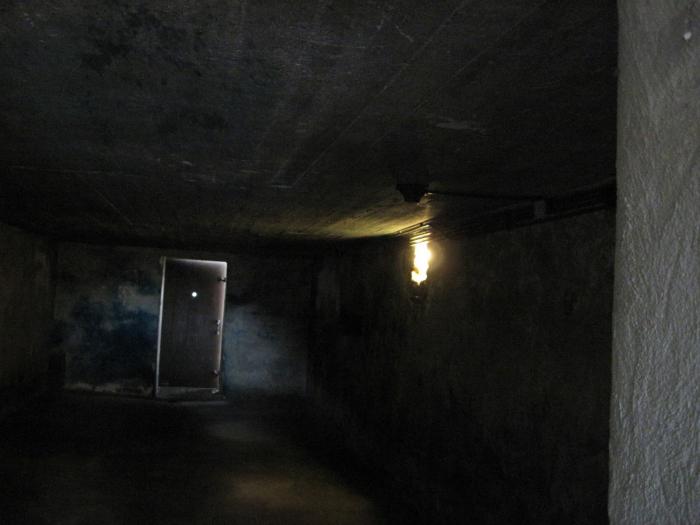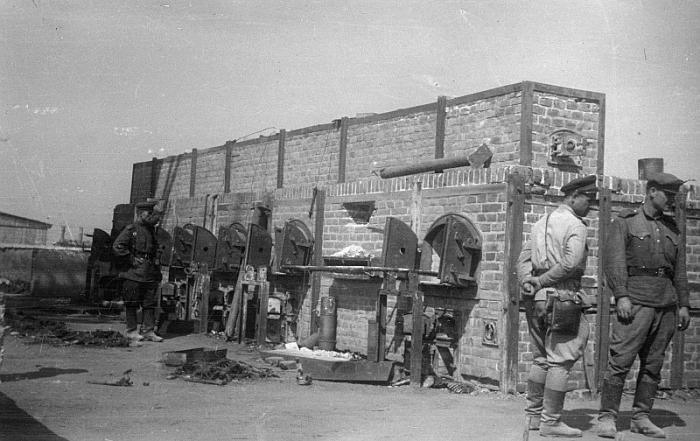The Second World War, however, like the First, led to many deaths. However, not only soldiers and officers were killed, but also innocent people who simply did not fit the Aryan type of appearance, for the purity of which the German dictator-tyrant Adolf Hitler had fought so hard. Many people died in concentration camps at the hands of cruel executioners. One of the largest camps was called "Majdanek", and it will be discussed.
Order
The Majdanek concentration camp was located in a suburb of Lublin, in Poland. It got its name from the Turkic word "square" (Maidan). In fact, the construction of such camps began with the submission of Hitler, who gave instructions to Heinrich Himmler, one of the senior officials of the Third Reich, to establish total control over the eastern territories captured by Germany.
On the same day, July 17, 1941, Himmler appointed one of the police leaders -
Odilo Globocnik - to be responsible for the creation of the SS structure and concentration camps in the occupied territory of Poland. In addition, Globocnik was responsible for the partial Germanization of Poland. The central in the eastern part of the occupied territory was to become the Majdanek concentration camp, located in the suburbs of Lublin. The construction of the complex was to be carried out by the prisoners themselves.
Construction Order
The official order to create the camp was given on July 20, 1941. It was on this day that Himmler announced the order to Globocnik during his visit to Lublin. The decree stated that it was necessary to create a camp that would be able to accommodate about 25-50 thousand people, who, in turn, would be engaged in the construction of departmental buildings of the SS and German police. In fact, the construction of the complex was entrusted to Hans Kammler, who occupied one of the leading posts of the budget and construction department of the SS. Already in September, he ordered to begin the creation of a part of the concentration camp, which could accommodate at least 5 thousand people.
However, some time later, an incredible number of prisoners of war were captured near Kiev, and Kammler changed his instructions, ordering the creation of 2 camps for prisoners of war - Majdanek and Auschwitz, designed for 50 thousand people each.
Camp construction
Initially, the first of the camps was built on the outskirts of the city of Lublin, near the cemetery. Not everyone liked this arrangement, and civil authorities began to protest, after which Globochnik transferred it to another territory, about 3 km from the city. After that, the first prisoners of concentration camps arrived here.
Territory expansion
Already in November, Kammler ordered the camp to be expanded, first to 125 thousand prisoners, and a month later to 150. A few months later, this capacity was not enough, so it was decided to re-equip the complex. Now “Majdanek” was supposed to hold up to 250 thousand Soviet prisoners, the number of which was constantly growing. However, Kammler’s calculations were not destined to come true. The Majdanek concentration camp was expanded by another 20 thousand places, and after that its construction was suspended.

About two thousand Soviet prisoners took part in the creation of the new huts, of which one and a half thousand died by November due to the terrible working and living conditions. That is, only five hundred people survived, of which about 30% were already disabled. In December, another one and a half hundred Jews joined the construction site, but immediately after that, an epidemic of typhoid broke out, and a month later it killed all those who participated in the construction of the camp.
Camp structure
The camp area was 95 hectares. Its entire territory was divided into five sections, one of which was exclusively for women. The complex consisted of many buildings, among which there were 227 workshops, factory and production, 22 barracks for prisoners of war and 2 administrative. In addition, Majdanek had ten branches, for example, Plaszów, Travniks, Hrubieszcz and others. Prisoners of the camp were engaged in the production of uniforms and weapons in factories.
Prisoners
According to official figures, this concentration camp in Poland became a temporary shelter for 300 thousand prisoners of war, of which about 40% were Jews and 35% were Poles. Among the remaining prisoners there were many Russians, Ukrainians and Belarusians. On the territory of this camp about 80 thousand people were brutally murdered, three quarters of whom were Jews. According to other sources, one and a half million prisoners lived on the territory of Majdanek, and the number of victims reached 360 thousand people.
By the time this concentration camp was created, it was supposed to hold about 50 thousand prisoners, and in 1942 its capacity increased fivefold. He had ten branches and own production facilities. Prisoners were destroyed beginning in April 1942. The "instrument" of death was the Cyclone B gas, which was also used at Auschwitz. And in September 1943, a crematorium was launched.
Erntefest
A lot of evidence and documentation remained about concentration camps, but it is impossible to display on paper how cruel the Erntefest operation carried out in early November 1943 became. Translated from German, this word means "harvest festival", very ironic, considering what happened. In just two days, on November 3 and 4, SS police destroyed all the Jews of the Lublin district, who were imprisoned in the concentration camps "Travniki", "Ponyatov" and "Maydanek". According to various sources, in general, from 40 to 43 thousand people were killed.

This was a terrible massacre. The prisoners were forced to dig trenches located near the camp on their own. The length of one such ditch reached 100 meters, a width of 6, and a depth of 3 meters. On the morning of November 3, the Jews of Majdanek and all nearby camps led to these trenches. The prisoners were divided into groups, ordered to lie near the ditches so that the next prisoner laid his head on the back of the previous one. About a hundred German SS representatives killed all of these Jews with a shot in the back of the head, passing along the ranks. All fascist concentration camps used brutal measures for their prisoners, but these executions were simply inhuman. So the corpses turned into layers in the trench, one after another. The SS men repeated the reprisal until the entire ditch was filled. During the shooting, music was played to drown out the shots. When all the ditches were already filled with corpses, they were covered with a small layer of earth, and then cremated.
The killings
Some scholars believe that the Majdanek concentration camp was originally supposed to contain only Soviet prisoners of war. Although this version does not have documentary evidence. Massacres began here a year after the end of construction, and in 1943 this place has already become the official death camp. Here, with the exception of the Erntefest operation, gas chambers were mainly used. For poisoning, carbon monoxide was first used, and later Cyclone B.
Camp liberation
In 1944, Soviet troops managed to liberate the Majdanek. The concentration camp, the photo of which once again prove the heartlessness of the SS troops, was immediately abandoned by the Germans, who, although they tried to hide the evidence of the massacres, could not do this. The Germans, who were then on the territory of the complex, tried to destroy the crematorium, which became the site of the murder of thousands of people, but they did not have time to do this, because they had to quickly leave this place. In the summer of the same year, the troops of the Soviet Union also managed to free the territories of several other death camps, such as Treblinka, Sobibor, and Belzhets, which were disbanded in 1943.
Conclusion
At its core, fascist camps are no different. Their whole structure is contrary to humanism and the idea that all people are equal. There cannot be a “but." Although you can look at any problem from different angles, the extermination of people by the thousands cannot be justified by anything, even that it was a war.

The concentration camp is a phenomenon that existed not only because the Third Reich needed it, because it was not Hitler who personally launched gas into the cells, military and ruthless soldiers also took part in this. Nevertheless, not everyone liked this situation, some were against it, but they had no choice, they were forced to remain cruel, so that they would not catch a traitor. The most humane of them even tried to help the prisoners, but this serves as an extremely weak excuse for their actions. However, this cannot be said about high-ranking members of the SS, because it was they who deliberately sent tens of thousands of innocent people to death, among whom were women and children.